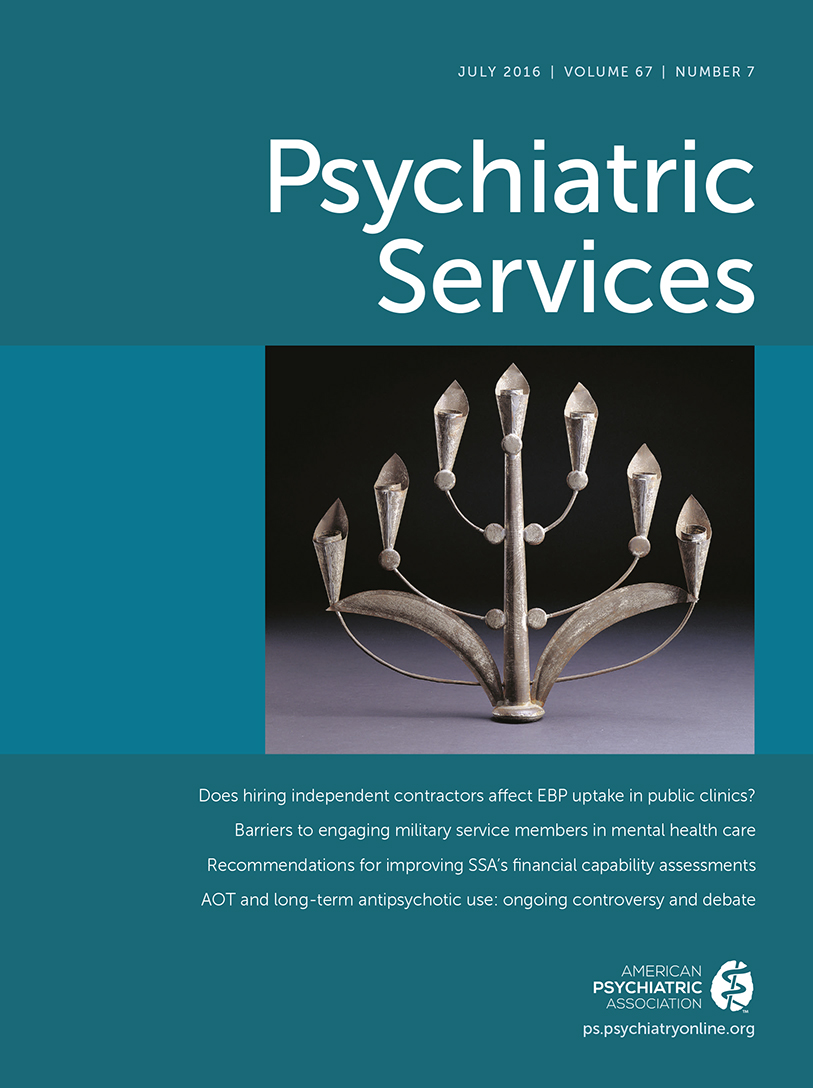Compulsory Community Treatment and Homicide: Insufficient Evidence Now and in the Future
TO THE EDITOR: In their Open Forum commentary, Barnes and Badre (1) expressed concerns about mandated outpatient treatment—in particular, the use of antipsychotic medication in such treatment. They noted that there is no empirical evidence that compulsory community treatment reduces admissions to the hospital or bed use (2). Furthermore, as they described, compulsory community treatment almost always implies long-term use of antipsychotic medication, which can have a negative influence on social functioning (3). Barnes and Badre also commented that in most jurisdictions compulsory community treatment is introduced after a public outcry when a person with mental illness has killed someone. In none of the studies that they cited was reduction of danger to others a primary outcome, and if Barnes and Badre had wanted to focus on randomized controlled trials to assess whether compulsory community treatment reduces danger to others, it would have been impossible for them to do so.
Murder or manslaughter by a psychiatric patient is a rare event. Even if patients stop taking their medication, they rarely become violent. Randomized controlled trials are not suitable to investigate rare events, because researchers cannot recruit millions of participants. They have to use nonrandomized studies with large samples. Immediately after the introduction of compulsory community treatment in England, there was a reduction in the number of homicides committed by people with mental illness, but this trend did not continue (4)—and even if it had, the evidence would not have been sufficient to support a causal influence (5).
Therefore, Barnes and Badre could have drawn an even stronger conclusion. Not only is there insufficient empirical evidence for the effectiveness of compulsory community treatment, but it is also very unlikely that there will be sufficient evidence in the future, at least if reduction of violence toward others is the main aim.
1 : Is the evidence strong enough to warrant long-term antipsychotic use in compulsory outpatient treatment? Psychiatric Services (Epub ahead of print, March 15, 2016)Link, Google Scholar
2 : Compulsory community and involuntary outpatient treatment for people with severe mental disorders. Cochrane Database of Systematic Reviews 12:CD004408, 2014Medline, Google Scholar
3 : Recovery in remitted first-episode psychosis at 7 years of follow-up of an early dose reduction/discontinuation or maintenance treatment strategy: long-term follow-up of a 2-year randomized clinical trial. JAMA Psychiatry 70:913–920, 2013Crossref, Medline, Google Scholar
4 : The National Confidential Inquiry Into Suicide and Homicide by People With Mental Illness Annual Report 2015: England, Northern Ireland, Scotland and Wales. Manchester, University of Manchester, 2015Google Scholar
5 : Explaining rare acts of violence: the limits of evidence from population research. Psychiatric Services 62:1369–1371, 2011Link, Google Scholar



